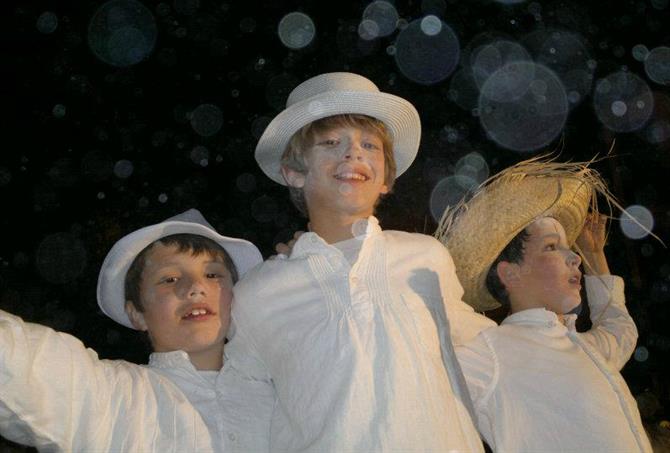Tenerife's Carnaval may be more famous, but Gran Canaria locals are justifiably proud of their capital version. Which is held every year on and around the streets of Las Palmas de Gran Canaria in the run up to Lent. Get a taste of this main event before you go with our handy preview.
LPA Carnaval, the big kick-off
2014's Carnaval de Las Palmas de Gran Canaria starts where it all began, in Vegueta's Plaza de Santa Ana, at 1.00pm on the 15th February. That's where it all began for Las Palmas de Gran Canaria. For this olde-worlde area's where the Spanish invasion force first settled, with Aragonese capital Juan Rejón founding the city on June 24th, 1478.
However, Las Palmas de Gran Canaria was established as a carnival city by the time of the 16th century. Already a cosmopolitan port, it attracted settlers from various locations. Including Italians who brought with them their love of a masked ball. Something the Carnaval Vegueta seeks to recreate.
Send in the clowns
Carnaval's clearly a time for parody. For further evidence, check out the murgas which you can see throughout the duration of the carnival. These bands of brothers, for they're nearly always men, dress up in clown costumes complete with made-up faces.
Essentially, a murga's a barber-shop quartet backed by a mini orchestra who either spit verse like rappers or enthusiastically toot on their musical instruments. They may look ridiculous but they're seasoned experts at poking fun at present-day political figures. It's a serious business too as you'll discover at the contest to discover the best murga which takes place beween the 17th and 22nd February, in Parque Santa Catalina.
It'll be all white on the night of the Indianos

One of the dates for your diary should be the 3rd March. When the Guiniguada area of town hosts the Carnaval Tradicional from 7:00pm onwards. Also known as La Noche de los Indianos, carnival-goers dress smartly all in white, with the men sporting panama hats, to attend this boisterous event which is a spoof of historical fact.
Like most of the Carnaval calendar, this is free to attend. Although you may incur some cleaning costs as talcum powder's chucked around to ensure all those present end up whiter than white. The Indianos were Canarians who emigrated to the Americas for a better life before returning wealthier, with 21st-century locals aping thee extravagant dress sense of these new colonials.
Life's a drag

Whilst it's every young Canarian girl's dream to be crowned Carnival Queen, the results of which are announced from 9:00pm on the 28th February in Parque Santa Catalina, there's an even more coveted accolade. That of Carnival Drag Queen.
The time and venue of the Drag Queen Gala's identical to the Carnival Queen one. Although you can see it's a more important affair, as it's the penultimate event on the carnival calendar, taking place on the 7th March. Yet both are one of the few dates you have to pay for, but be quick as the €10.00 tickets tend to sell out in record time.
Parades for big and small
The Gran Cabalgata, the main carnival parade, takes place on the 1st March. From 5:00pm, cars, floats (carrossas) and marching bands including butacadas (drummers), comparsas (congo dancers), and murgas head south along the major Léon y Castillo thoroughfare.
The junior version, the Cabalgata Infantil, is another 5.00pm start. It begins at La Isleta's Castillo de la Luz. Each year, the LPA Carnaval has a different theme. 2014's is the Mundo de la Fantasía (the world of fantasy), so expect to see plenty of boys dressing up as witches and girls as wizards.
Buried at sea
The LPA Carnaval goes out with a bang. Literally. For this is the Entierro de la Sardina, held on the 8th March, where festival-goers dress up as priests and widows to accompany a sardine to their funeral. The event finishes off with a colourful firework display.
Unlike other processions, the Burial of the Sardine starts in the south of the city, in Plaza de la Feria before mock-solemnly heading towards the north, and final destination, Playa de las Canteras. The effigy of the sardine's burned off a boat. The sardine's a metaphor for carnival, so people are saying goodbye to the three-week-long event for another year.
